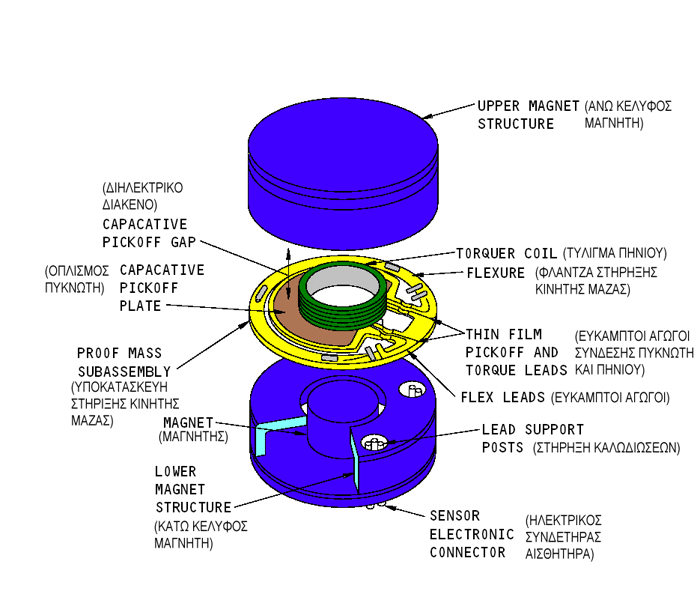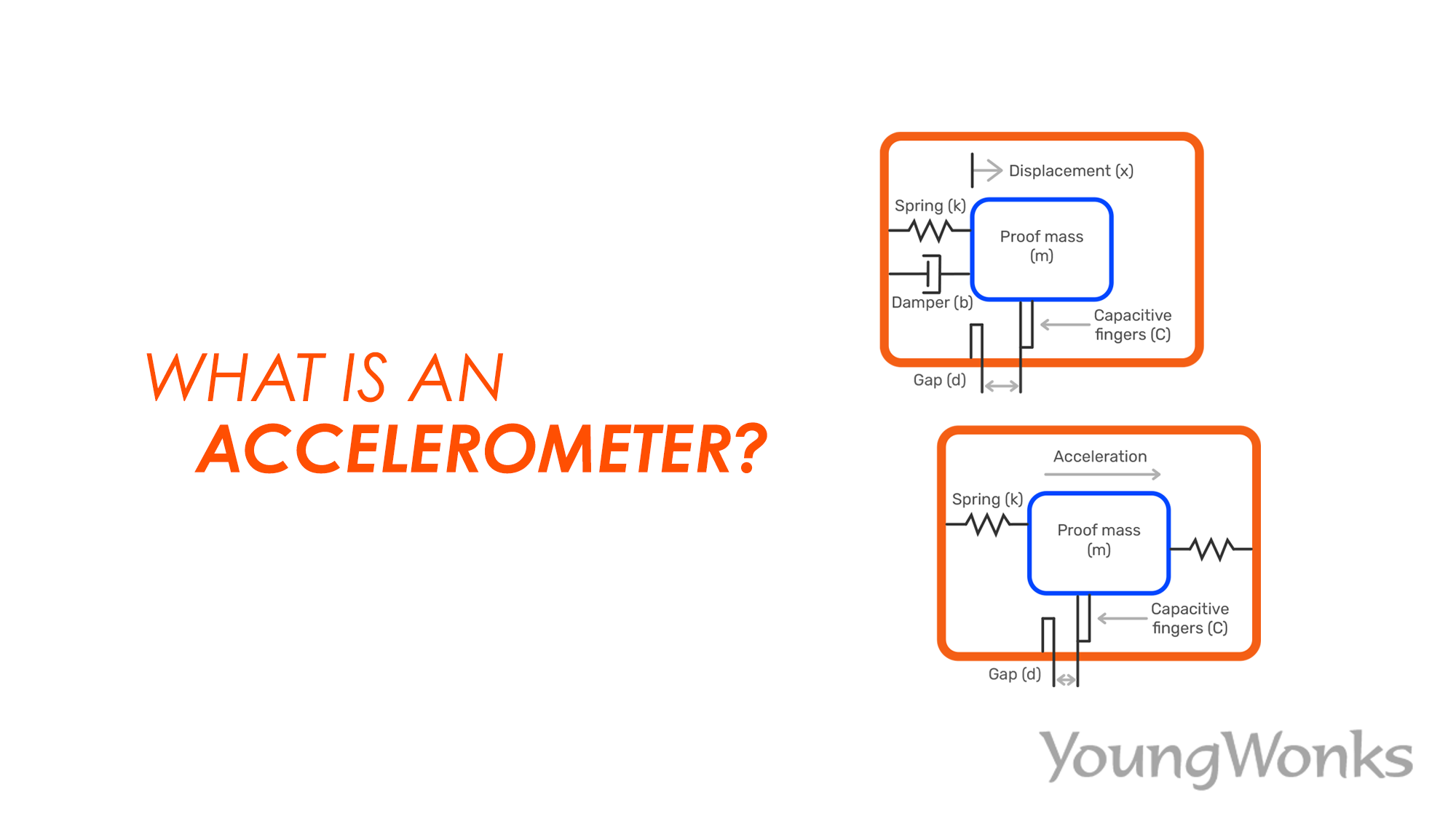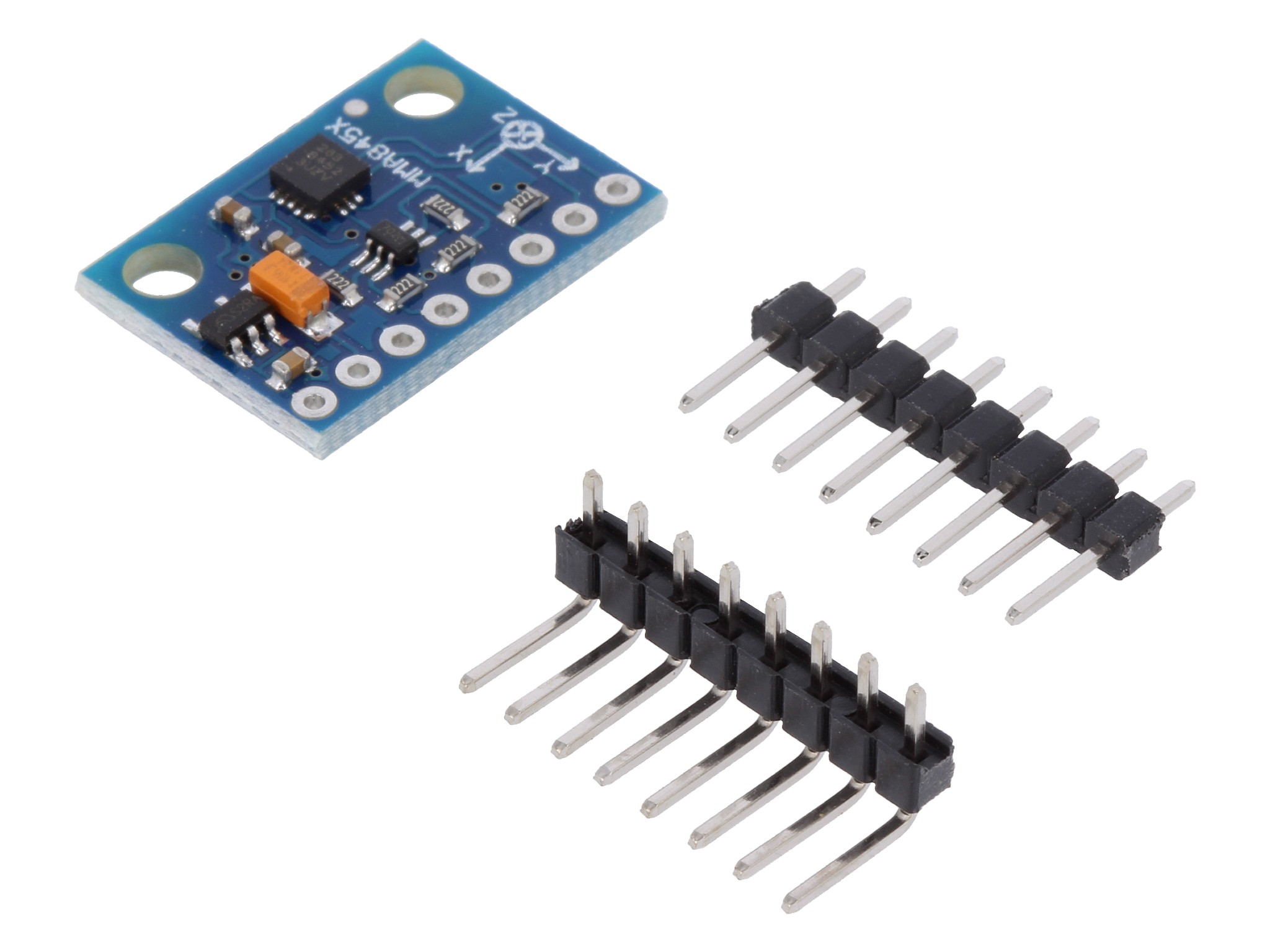An accelerometer is used to measure acceleration and tilt in various devices and applications. It detects motion changes.
Accelerometers are essential sensors that measure acceleration forces in devices like smartphones, fitness trackers, and automotive systems. By detecting movement and orientation changes, accelerometers enable features like screen rotation, step counting, and gesture controls. These sensors play a crucial role in enhancing user experiences and providing accurate data for applications such as navigation, gaming, and fitness tracking.
With the ability to sense both static and dynamic acceleration, accelerometers have become integral components in modern technology, contributing to innovations in various industries.

Credit: www.k-makris.gr
Introduction To Accelerometers
An accelerometer is a device that measures acceleration forces, allowing it to determine the movement, orientation, and tilt of an object. These sensors are commonly used in various applications across industries for their ability to provide valuable motion data.
Primary Functions
- Measuring acceleration forces accurately
- Detecting changes in velocity and orientation
- Enabling precise motion tracking
Historical Development
The first accelerometers were developed in the early 20th century for applications in aviation and engineering. Over time, advancements in technology have led to the miniaturization and integration of accelerometers into various devices we use today.

Credit: www.youngwonks.com
Working Principle Of Accelerometers
Accelerometers measure acceleration forces and are used in various applications such as smartphones, cars, and fitness trackers. They work on the principle of sensing changes in motion and orientation to provide data for tasks like screen rotation and step counting.
Sensor Mechanisms
Accelerometers are devices that measure the acceleration of an object. The working principle of accelerometers is based on the measurement of the force that is required to move a mass. The basic principle of an accelerometer is that it consists of a mass attached to a spring. When the accelerometer experiences an acceleration, the mass moves relative to the casing of the device, and the spring stretches or compresses. This movement is detected by the sensor mechanism, which then converts it into an electrical signal that can be measured.Types Of Accelerometers
There are many different types of accelerometers, each with its own unique sensor mechanism. The most common types of accelerometers are piezoelectric, capacitive, and MEMS (microelectromechanical systems). Piezoelectric accelerometers use a crystal that generates an electric charge when it is subjected to stress or strain. Capacitive accelerometers use a capacitor to measure the distance between two plates, which changes when the accelerometer experiences an acceleration. MEMS accelerometers use microfabrication techniques to create tiny mechanical structures that can detect acceleration.| Type | Advantages | Disadvantages |
|---|---|---|
| Piezoelectric | High sensitivity | Expensive |
| Capacitive | Low power consumption | Less sensitive than other types |
| MEMS | Small size | Less accurate than other types |
Applications In Consumer Electronics
Consumer electronics have seen a surge in the use of accelerometers, which are essential components in various devices. These motion-sensing devices have revolutionized the way we interact with technology, enabling a wide range of applications in smartphones, tablets, gaming controllers, and more.
Smartphones And Tablets
Accelerometers in smartphones and tablets are utilized for screen rotation, enabling the display to automatically adjust from portrait to landscape orientation based on the device’s positioning. This feature enhances user experience and provides convenience when viewing content on mobile devices.
Gaming Controllers
Gaming controllers integrate accelerometers to detect motion and tilt, allowing users to interact with games through physical movements. This technology enhances the immersive gaming experience, enabling more intuitive and dynamic gameplay.
Role In Automotive Industry
An accelerometer plays a vital role in the automotive industry, contributing to various aspects of vehicle functionality. Let’s delve into how accelerometers are utilized in the automotive sector, particularly in the areas of vehicle dynamics and safety systems.
Vehicle Dynamics
Accelerometers in vehicles help monitor motion and orientation, aiding in enhancing driving performance and stability.
Safety Systems
Accelerometers are integral in triggering safety mechanisms like airbags and stability control systems during sudden maneuvers.
Use In Aerospace And Aviation
An accelerometer in aerospace and aviation plays a crucial role in various applications, ensuring precise measurements and reliable data for safety and performance.
Navigation Systems
Accelerometers assist in determining position, velocity, and orientation of aircraft in navigation systems.
Flight Testing
During flight testing, accelerometers are used to evaluate aircraft performance and structural integrity.
Acceleration Measurement In Sports
Acceleration measurement in sports plays a crucial role in optimizing performance, preventing injuries, and enhancing overall athlete experience. One of the key components in achieving these objectives is the use of accelerometers, which are widely utilized to monitor and analyze various aspects of athletic performance. Let’s delve into how acceleration measurement with accelerometers is utilized in the realm of sports.
Performance Monitoring
Accelerometers are utilized in sports for performance monitoring to track an athlete’s acceleration, speed, and movement patterns. These devices provide valuable data that coaches and athletes can use to analyze and improve performance, optimize training strategies, and enhance overall athletic capabilities.
Injury Prevention
Another significant application of accelerometers in sports is injury prevention. By accurately measuring an athlete’s acceleration and movement patterns, these devices can help identify potential issues related to overexertion, improper technique, or excessive strain on specific muscle groups. This data can be instrumental in developing injury prevention strategies and personalized training programs to mitigate the risk of injuries.
Industrial And Engineering Applications
An accelerometer is an electromechanical device that measures acceleration forces. It is commonly used in various applications, including mobile devices, gaming controllers, and fitness trackers. However, the use of accelerometers is not limited to consumer electronics. In industrial and engineering applications, accelerometers are widely used for structural health monitoring and vibration analysis.
Structural Health Monitoring
Structural health monitoring is the process of using sensors to detect changes in the behavior of structures. It is an essential technique for ensuring the safety and reliability of bridges, buildings, and other structures. Accelerometers are used to measure the acceleration of structures and detect changes in their behavior. By analyzing the acceleration data, engineers can identify potential problems and take corrective actions before they become critical.
Vibration Analysis
Vibration analysis is the process of using sensors to measure the vibration of machines and other mechanical systems. It is an essential technique for ensuring the reliability and efficiency of industrial equipment. Accelerometers are used to measure the vibration of machines and detect changes in their behavior. By analyzing the vibration data, engineers can identify potential problems and take corrective actions before they become critical.
Overall, accelerometers are versatile devices that are used in a wide range of applications. In industrial and engineering applications, accelerometers play a critical role in ensuring the safety, reliability, and efficiency of structures and machines.
Healthcare And Biomechanics
Patient Monitoring Devices
An accelerometer is utilized in patient monitoring devices to track movements and activities.
Movement Analysis
In biomechanics, accelerometers are used to analyze gait, posture, and physical activity.
Future Of Accelerometers
Advancements In Technology
With the rapid advancements in technology, accelerometers are witnessing significant improvements. Manufacturers are constantly enhancing the sensitivity, accuracy, and reliability of these devices. The integration of microelectromechanical systems (MEMS) technology has led to the development of smaller, more efficient accelerometers that consume minimal power while delivering precise measurements.
Emerging Applications
Accelerometers are finding emerging applications in various industries. Healthcare is one such field where these devices are being utilized for monitoring patient movements, detecting falls, and enabling remote patient monitoring. In automotive applications, accelerometers play a pivotal role in advanced driver-assistance systems (ADAS) and vehicle stability control. Moreover, the aerospace industry is leveraging accelerometers for structural health monitoring and flight data recording.

Credit: www.tme.com
Frequently Asked Questions
What Is A Common Use For An Accelerometer?
Accelerometers are commonly used in smartphones for screen rotation and activity tracking. They detect motion and orientation changes.
What Is The Function Of An Accelerometer?
An accelerometer measures acceleration forces to detect changes in velocity, orientation, and vibration accurately.
What Does An Accelerometer Detect?
An accelerometer detects the acceleration and movement of an object in a particular direction. It measures changes in velocity.
What Devices Use An Accelerometer?
Smartphones, tablets, fitness trackers, and gaming controllers use accelerometers to detect movement and orientation.
Conclusion
Accelerometers are versatile devices used in various fields such as automotive, aerospace, and consumer electronics. Their ability to measure acceleration and detect motion makes them essential in applications like navigation systems and vibration monitoring. Understanding the uses and benefits of accelerometers can help industries enhance product performance and safety.
